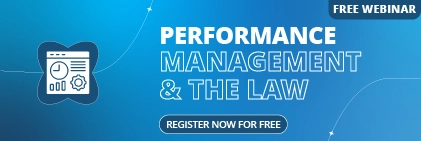In today’s rapidly evolving regulatory landscape, businesses face unprecedented compliance challenges. From workplace safety to data protection, the complexity and volume of regulations continue to grow, demanding more professional approaches to compliance management.
The rise of artificial intelligence (AI) and machine learning (ML) is fundamentally transforming how organisations handle compliance. These advanced technologies offer the possibility of smarter, more efficient, and proactive compliance management.
This blog explores how AI and ML are reshaping compliance practices for Australian and New Zealand businesses, and how Sentrient’s innovative compliance platform is helping organisations leverage these technologies to stay ahead of regulatory challenges.
What Are AI and Machine Learning in Compliance Management?
Modern businesses increasingly rely on artificial intelligence and machine learning technologies to manage their compliance obligations. These powerful tools are revolutionising how organisations approach compliance management across all industries.
AI refers to computer systems designed to mimic human intelligence and decision-making processes. Machine learning, a subset of AI, enables systems to learn from data, identify patterns, and make decisions with minimal human intervention.
In the compliance realm, these technologies don’t replace human oversight but rather enhance it. They augment existing processes to improve accuracy, efficiency, and responsiveness.
Why Are AI and ML Becoming Essential for Compliance?
Today’s compliance landscape is more complex than ever. With new legislation constantly emerging, from workplace safety to data privacy, organisations need sophisticated tools to keep up to date.
Conventional manual compliance systems frequently fall short in managing the scale and intricacy of today’s regulatory demands. They are typically reactive, prone to human error, and resource-intensive.
AI and ML offer a proactive approach to compliance management. They process vast amounts of data quickly, identify potential risks before they escalate, and adapt to new regulatory challenges.
How Is AI Transforming Compliance Management?
1. Automated Policy Management and Updates
Regulatory changes require quick policy updates across the organisation. AI-powered systems can monitor regulatory changes and flag when policies need updating, ensuring your business remains compliant without delays.
These intelligent systems can analyse new legislation and automatically suggest required policy amendments. This significantly reduces the time between regulatory changes and policy updates.
| Traditional Approach | AI-Enhanced Approach |
|---|---|
| Manual tracking of regulatory changes | Automated monitoring of regulatory updates |
| Time-consuming policy revision | Instant policy change suggestions |
| Delayed implementation | Real-time policy distribution |
2. Personalised Compliance Training
Effective compliance training must be relevant to each employee’s role and responsibilities. AI systems can tailor learning paths based on job roles, risk exposure, and even learning styles to maximise engagement and retention.
Machine learning algorithms analyse performance data to identify knowledge gaps and adapt training content accordingly. This ensures that each employee receives relevant information instead of generic material.
- Role-based customisation: Training focused on compliance risks specific to each role
- Adaptive learning paths: Training that adjusts based on assessment results
- Engagement optimisation: Content delivery that matches individual learning preferences
3. Intelligent Incident Detection and Reporting
Early detection of compliance issues prevents escalation to serious problems. ML algorithms can detect unusual patterns in workplace behaviour or communications that might indicate compliance risks.
These systems can identify subtle signs of potential harassment, fraud, or safety violations by analysing data from multiple sources. This allows for early intervention before issues escalate.
AI also streamlines the reporting process by automatically categorising incidents based on severity and history. This ensures appropriate escalation and response times.
4. Real-Time Monitoring and Continuous Auditing
Continuous compliance monitoring offers significant advantages over periodic audits. AI brings real-time monitoring capabilities, offering ongoing checks rather than infrequent reviews.
Traditional audits provide only a snapshot of compliance at specific moments. AI-powered continuous monitoring ensures that compliance is maintained every day, not just during audit preparation.
ML algorithms can flag anomalies in workforce behaviour or identify gaps in training completion. This enables compliance managers to address issues immediately rather than discovering them during formal audits.
5. Risk Prediction and Proactive Mitigation
Proactive risk management offers greater effectiveness than reactive compliance strategies. By analysing historical compliance data, AI can predict where breaches are most likely to occur.
These predictive capabilities allow for targeted interventions in high-risk areas. For example, departments with historically delayed training completion might receive additional support or monitoring.
The result is a shift from reactive compliance management to proactive risk mitigation. This approach is not only more effective but typically more cost-efficient.
Challenges in Implementing AI for Compliance
1. Data Quality and Integration Issues
AI systems require high-quality, integrated data to function effectively. Many organisations struggle with siloed information systems and inconsistent data formats.
Successful implementation requires a comprehensive data strategy. This includes data cleansing, standardisation, and integration across different business systems.
Without this foundation, even the most sophisticated AI tools will deliver limited value. Organisations must invest in data governance to ensure ongoing data quality.
2. Privacy and Ethical Considerations
Balancing compliance monitoring with employee privacy presents significant challenges. Organisations must establish clear boundaries and transparent policies regarding data collection and analysis.
Employees should understand what information is being monitored and why. Maintaining trust is essential for successful implementation of AI-powered compliance systems.
Ethical guidelines for AI use are essential, particularly when systems are designed to detect behavioural patterns or communication content.
3. Change Management and Adoption
The introduction of AI-powered compliance tools represents a significant change in how compliance functions operate. Resistance is common when traditional processes are disrupted.
Successful implementation requires thoughtful change management strategies. This includes clear communication about the benefits of AI, comprehensive training, and ongoing support.
Leadership commitment is crucial for driving adoption. When executives demonstrate support for AI initiatives, employees are more likely to embrace the changes.
How AI Improves Human Expertise in Compliance
AI augments rather than replaces human expertise in compliance management. The technology handles routine tasks, analyses large data sets, and identifies patterns that might escape human notice.
This frees human compliance professionals to focus on strategic decision-making and complex cases requiring judgement and contextual understanding.
The most effective compliance programs combine AI capabilities with human judgement. Technology provides the insights, but humans interpret their significance and determine appropriate actions.
Pattern recognitionEthical judgement
| AI Strengths | Human Strengths |
|---|---|
| Data processing at scale | Contextual understanding |
| Consistent application of rules | Adaptability to unique situations |
| 24/7 monitoring capability | Empathy and interpersonal skills |
Future Trends: The Evolving Role of AI in Compliance
1. Natural Language Processing for Regulatory Analysis
Regulatory documentation continues to grow in volume and complexity. Natural Language Processing (NLP) represents a promising solution to this challenge.
Advanced NLP algorithms can scan and interpret regulatory documents, extracting key requirements and implications. This dramatically reduces the time required for regulatory analysis.
These systems will increasingly translate complex legal language into actionable compliance requirements, improving both efficiency and accuracy.
2. Predictive Compliance Models
Anticipating regulatory changes offers strategic advantages to organisations. Predictive compliance models are beginning to make this possible.
By analysing historical regulatory patterns and current policy discussions, AI can forecast likely regulatory developments. This allows organisations to prepare for changes proactively.
These predictive capabilities will transform compliance from a reactive function to a strategic business partner.
How Sentrient Supports AI-Powered Compliance
Sentrient’s platform is uniquely positioned to help Australian and New Zealand businesses leverage AI for compliance management. Our solution incorporates several key AI capabilities:
- Intelligent policy management: Automated policy updates based on regulatory changes
- Adaptive training delivery: Personalised learning paths for each employee
- Smart incident reporting: Automated categorisation and escalation of compliance incidents
- Continuous compliance monitoring: Real-time visibility into compliance status
- Predictive risk analytics: Early identification of potential compliance gaps
Our commitment to legally endorsed content ensures that AI-driven recommendations align with current regulatory requirements. Our user-friendly design makes advanced compliance technology accessible to organisations of all sizes.
Conclusion
AI and machine learning aren’t just technological upgrades – they represent a fundamental shift in how organisations approach compliance management. By embracing these technologies, businesses can create more effective, efficient, and resilient compliance programs.
For Australian and New Zealand organisations, the benefits are clear: reduced risks, lower costs, and enhanced capacity to navigate an increasingly complex regulatory landscape.
Ready to Transform Your Compliance Management?
Contact Sentrient today to explore how our AI-powered compliance platform can help your organisation stay ahead of regulatory challenges. Our team of experts will guide you through the implementation process. Get in touch with us today!
FAQs
1. Can AI and machine learning truly improve regulatory compliance?
Yes, AI and ML technologies significantly enhance regulatory compliance by automating monitoring processes, identifying potential issues earlier, and enabling more consistent application of compliance requirements. Organisations typically see reduced compliance breaches and lower costs after implementation.
2. Why do compliance and risk executives need machine learning?
Compliance and risk executives face increasing regulatory complexity and volume. Machine learning helps them manage this complexity by automating routine tasks, prioritising high-risk areas, and providing data-driven insights. This allows executives to focus on strategic decision-making.
3. How does AI change the role of compliance professionals?
Rather than replacing compliance professionals, AI transforms their role from administrative to strategic. By automating routine tasks and providing advanced analytics, AI allows compliance teams to focus on interpreting results, making critical decisions, and developing proactive strategies.
4. Which evolving trend involves using AI and ML in compliance efforts?
Predictive compliance is the most significant evolving trend. This approach uses AI and ML to forecast potential compliance issues before they occur, allowing organisations to implement preventative measures. Other trends include natural language processing for regulatory analysis.
5. What specific examples of AI and ML applications exist in compliance?
Practical applications include automated policy updates based on regulatory changes, personalised compliance training based on role and risk profile, intelligent incident detection and categorisation, continuous compliance monitoring, and predictive risk analytics.





